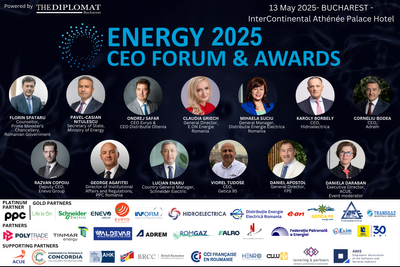EY Future Consumer Index: Rising costs dent post-pandemic hopes

- 52% of consumers say rising costs are affecting ability to purchase goods
- Consumers prioritizing ‘experiences’ over buying physical goods
- 42% of respondents will only buy from brands that align with their values
The glimmer of hope for a move to a more positive post-pandemic world for consumers has been hit with growing economic uncertainties in the past few months, diminishing consumer confidence once again, according to the latest EY Future Consumer Index.
The ninth edition of the quarterly global survey of 18,000 consumers, conducted in February 2022, finds that the rising cost of goods and services is impacting 52% of global respondents’ ability to purchase goods and is affecting their purchasing decisions.
While, inevitably, this impacts lower-income earners the most (62%), the survey shows that middle-income earners (48%) and high-income earners (42%) are also being squeezed. Emerging markets are feeling the pinch strongly, with 62% citing affordability affecting their choices (South Africa 77%, India 64%, Brazil 63%, China 42%), compared with 45% of respondents from developed markets (US 50%, Canada 52%, UK 42%, France 40%).
Driven largely by the inflationary impact on prices and the anticipation of new COVID-19 variants, the survey shows that consumers will continue to rein in their consumption, trade down to cheaper alternatives, and purchase fewer non-essentials. Some key items where respondents are spending less include clothing (38%), beauty and cosmetics (35%) and alcohol (30%). Many are already seeking cheaper alternatives for fresh food (20%) and packaged food (19%).
Cristian Cârstoiu, Partner, Consulting, EY Romania: “With consumers expected to consume less and focus on lower margin products, the retails will inevitably move to protect their own margin. This can translate into various initiatives based on the level of maturity and strategy of each player, from cost-cutting measures to their supply chain and inventory reduction to more drastic ones like optimizing their physical presence and further increasing the final price to the consumers.”
Uncertainty around managing rising living costs is driving almost two-thirds (60%) of all respondents to want to save more for the future, with 39% of all respondents have made it a goal already to save rather than spend. The biggest savers are in South Africa (56% of all country respondents), Indonesia (54%) and Mexico, Brazil, and Argentina (all at 51%).
Experiences rather than ”things” are driving spend
The survey shows that consumers are looking for experiences more than ever before, as they make up for lost time and look for escapism from the pressures of the post-COVID-19 world, with 45% saying they plan to live more at the moment.
Out of the five key broad spending priorities – planet first, affordability first, experience first, health first and society first – experience has seen the biggest increase, doubling in priority since 2020, and is now the third biggest priority when consumers decide on where to spend, while it was the smallest at the beginning the pandemic.
Experience is now the biggest priority segment in the US (24%), France (26%), India (31%), and Thailand (32%). It remains the smallest segment in Finland (13%), Australia (15%), and New Zealand (10%). Forty-two percent of all respondents are planning on spending more money on experiences in the next year. However, 39% are less inclined to be involved in experiences outside of their home, so the experience must come to them. Customers who are venturing out are demanding more from physical stores, with more than a third (36%) planning to only visit stores that offer a great experience.
Consumers guided by sustainability and values
When it comes to buying decisions, most respondents, for the second quarter in a row, are placing the planet first (26%), ahead of affordability (24%) and experience (20%), this is particularly evident in China and Brazil, where 32% of respondents in each country prioritize the planet in the spending decisions.
Consumers are choosing to make more sustainable purchases, doing what they can to preserve their environment, with 56% saying they will pay more attention to the environmental impact of their purchases and 52% committing to pay more attention to the social impact. Two fifths (42%) say they will only buy from brands that align with their own values – a view held by the same percentage of the Generation Z population and 48% of Millennials.
The latest edition of the EY Future Consumer Index is available at ey.com/futureconsumerindex9.













